Rechercher dans ce blog
Sunday, October 31, 2021
Saturday, October 30, 2021
The everyday ingredient that harms the climate - BBC News
In September 2015, just a few months before the world signed up to the Paris Agreement on climate change, a number of huge forest fires erupted across Indonesian Sumatra and Borneo, darkening the skies across Southeast Asia and threatening the health of hundreds of thousands of people.
More than 2.6 million hectares (10,000 sq miles) had burned by the time the fires subsided in October. The fires were responsible for the same amount of greenhouse gas emissions as produced by the whole of Germany that year. The loss of tropical forests – the home of endangered species such as orangutans – was a hard blow for biodiversity. But it was the peat below the forests' surface that had the greatest impact on the climate.
Peat is a dense, soil-like material made up of partially decomposed organic matter which accumulates in swamp-like peatlands. Particularly in tropical regions, it can grow into a massive carbon store many metres deep. Worldwide, peatlands store more than 550 gigatonnes (billions of tonnes) of carbon globally. That's equal to 42% of the carbon stored in soil on the planet, despite peatlands covering less than 5% of the Earth’s surface area. Indonesia is home to some of the largest and most carbon-dense peatlands in the world.
Much of Indonesia's vast tropical forest – the third largest in the world – grows on peatlands. These soils are naturally wet, which keeps the peat from decomposing, but when forests are converted into palm oil plantations the peat dries out, leading them to rapidly degrade and release their carbon into the atmosphere. Globally, almost all oil palm is grown on lands that were once tropical moist forests.
The scale of Indonesian forest fires is a reminder to the world that addressing climate change means more than just shifting away from fossil fuels or adopting clean energy. Land also matters. Emissions from land-use, including agriculture, deforestation and peatland degradation, account for about a quarter of all global emissions, according to the Intergovernmental Panel on Climate Change.
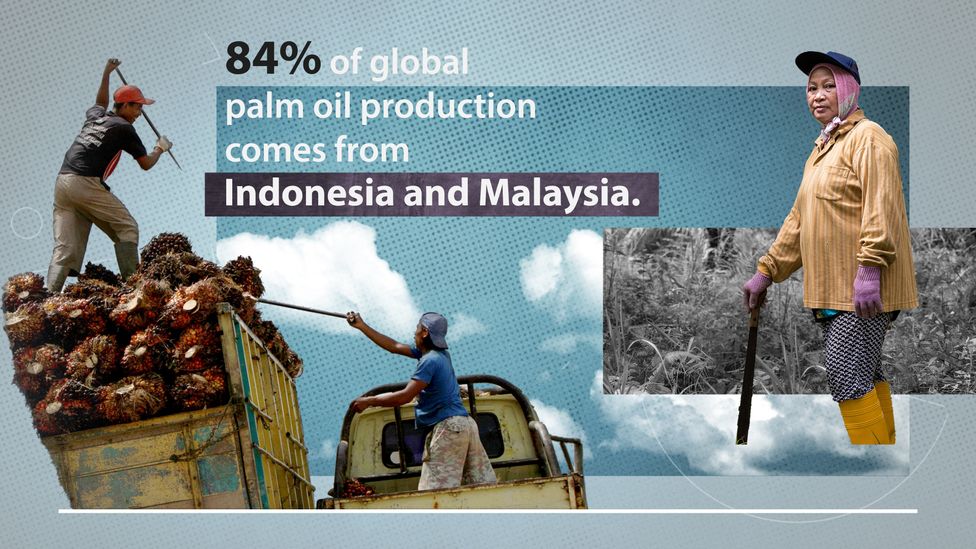
(Source: Our World in Data/UN FAO, Credit: Adam Proctor/BBC)
Indonesia is ground zero for land-use change emissions. They typically make up around half of the country's total emissions, depending on the scale of fires in a certain year. The fires in 2015 made Indonesia the fourth largest greenhouse gas emitter globally, after China, the US and India.
Unlike temperate forests, fires are very rare in the tropics under natural conditions, because ample rainfall keeps the water table high. The problem is that oil palm, a non-native plant originally from West Africa, prefers dry land. As plantations expanded across Riau, North Sumatra and Central Kalimantan from the 1990s, canals were built to drain the land, putting peatlands at risk.
"Palm oil, much more than other crops, tends to expand onto tropical forests and peatlands with high carbon stock," says Stephanie Searle, fuels program director at the International Council on Clean Transportation. "Those impacts are really, really huge for the global climate."
Since 1990, palm oil has grown from a niche commodity to become one of Indonesia's main exports. The industry now encompasses 6.8 million hectares (26,300 square miles) of land, an area approaching the size of the Republic of Ireland. It produces 43 million metric tonnes of oil, 58% of the world's total, which is both consumed domestically and exported to regions including Europe, the United States, India and China.
"Palm oil has been a major driver of deforestation," says Annisa Rahmawati, a Jakarta-based forests campaigner at Mighty Earth, an environmental non-profit. "Insufficient law enforcement and disclosure created a situation that diminished our environment and harmed our people."
In 2021, six years after the historic fires, it seemed like progress was finally being made. While fires still burn yearly, including significant fires in 2018 and 2019, they were far less widespread than those in 2015. Furthermore, deforestation in 2020 had fallen 70% from its 2016 peak, according to Global Forest Watch data. The government's Peatland Restoration Agency and non-profits like Wetlands International and the Borneo Nature Foundation have re-wetted and restored hundreds of thousands of hectares of peatlands. In 2018, Indonesia implemented a ban on new oil palm plantations.
Meanwhile, entities like the Roundtable on Sustainable Palm Oil (RSPO), set up in 2004 after a wave of negative attention on the links of palm oil with deforestation, claim to have pushed supply chains to become more responsible. Major palm oil buyers such as L'Oreal, PepsiCo and Unilever have made zero-deforestation commitments.
But these fixes are not yet permanent. There has not yet been enough progress in transparency and responsibility in the palm oil industry to cut its links with deforestation, Rahmawati says. The RSPO has been criticised for enabling industry greenwashing, with a 2015 report from the Environmental Investigation Agency alleging fraud and a lack of credibility in its assurance processes in the organisation's supply chain certification scheme, and a 2019 follow-up finding many of these issues still remained. The RSPO responded that it is "committed to continuous improvement", and that the reports were inaccurate and did not take into account improvements to its assurance processes.
Indonesia's ban on new palm oil concessions expired in September 2021, and has not been replaced. The passage of a major new law in Oct 2020, meant to create jobs and spur economic recovery from Covid-19, paired with near-record high prices for palm oil globally, have led many to fear that a return to fires, peatland and widespread deforestation could again be on the horizon.
The fires in 2015 were, in many ways, a worst-case scenario. That year saw an extremely strong El Niño effect, which brought dry conditions to much of Indonesia. Once the fires reached the peat underground, they became extremely difficult to put out, and burned for weeks until rains finally came.
The massive scale of these fires acted as a wake-up call to Indonesia. Ahead of United Nations global climate conference in 2015 (COP21), Indonesia announced in its UN climate pledge to reduce emissions from forestry by 66% to 90% by 2030, depending on international assistance. To support this, in January 2016 President Joko "Jokowi" Widodo created the Peatland Restoration Agency (BRG) and tasked it with meeting new goals to restore 1.7 million hectares (6,600 sq miles) of peatlands within concession areas (including palm oil plantations), and 900,000 hectares (3,500 sq miles) of peatlands outside of these areas by 2020. The country's 2018 palm oil concession ban took this a step further, and in 2019 its moratorium on deforestation became permanent.
The BRG and other entities tasked with supporting peatland restoration faced a huge challenge. Peatlands are incredibly fragile, so they needed to work fast to restore those that were already being lost in order to limit CO2 emissions.
"If we are too late in restoring our peatlands, it will not be possible," says Nyoman Suryadiputra, a senior advisor at Wetlands International Indonesia. "Once the organic matter disappears, the ecosystem will change and it's no longer possible to rehabilitate it."
If anyone knows about this, it's Wetlands International Indonesia. The organisation has been working on peatland restoration across the archipelago since the late 1990s in the same provinces where the rapid expansion of oil palm plantations has transformed landscapes. Its latest project, begun in 2019, is working with 350 households in the province of North Sumatra to restore degraded smallholder palm oil plots around their villages.
In order to ensure that restoration is both effective and sustainable in the long-term, they take a community-centered approach. "We have to look after the community's livelihood," says Nyoman. "We cannot force them to restore their peatlands if they are hungry." That means providing alternative income streams to palm oil, such as other kinds of forest products or aquaculture. It also means ensuring locals are well-informed about the restoration effort and directly involved in monitoring it.
Many communities in Indonesia use peatlands for farming not only palm oil but other crops such as rice, maize and root vegetables, which they depend on for income, says Herry Purnomo, a researcher in peatland restoration at the Center for International Forestry Research in Bogor, Indonesia. "The development of community-based business models hand-in-hand with peatland restoration is a must," he says.
The BRG nearly met one of its goals, restoring 835,288 hectares (3,200 sq miles) of peatlands on state or community-controlled lands. But it failed, by far, to meet its other goal for peatland restoration within concession areas, restoring only 390,000 (1,500 sq miles) out of a planned 1.7 million hectares (6,600 sq miles) as of early 2020. The reason for this was BRG lacked the legal authority to force concession holders to restore peatlands, says Purnomo. "Peatland restoration outside concession areas is mainly the responsibility of the government, while inside the concession it is the concession holder's responsibility," he says.
Earlier this year, the organisation saw its mandate both extended and expanded. Now called the Peatland and Mangrove Restoration Agency (BRGM), it is tasked with restoring 600,000 (2,300 sq miles) hectares of degraded mangroves as well as a further 1.2 million hectares (4,500 sq miles) of peatlands by the end of 2024.
"I hope they can meet the updated goals," said Fadhli Zakiy, who leads the Peatland Restoration Information Monitoring System at WRI Indonesia. "We believe that they can, as long as the government supports them with an adequate budget and with regulations."
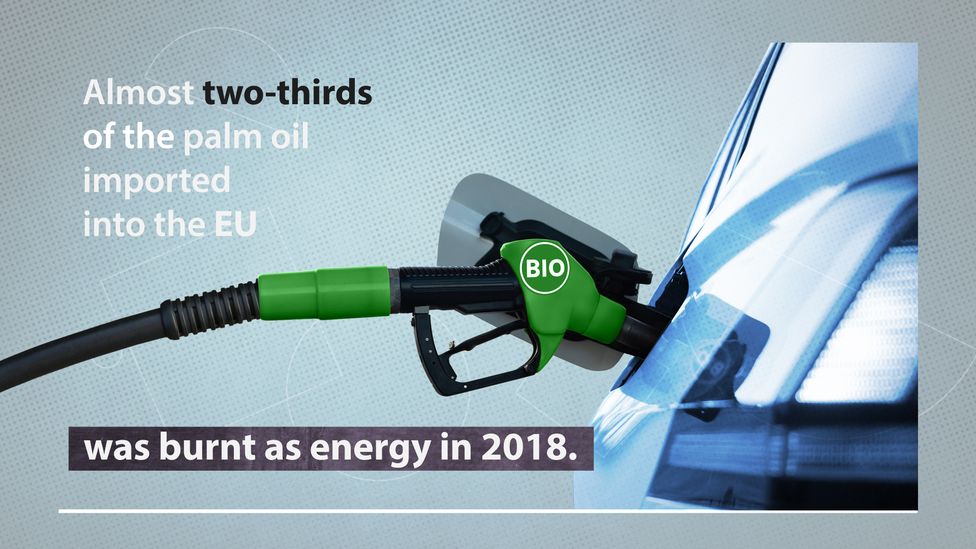
Palm oil is best known for its use in household products, but much of it is used to fuel vehicles (Source: Transport and Environment, Credit: Adam Proctor/BBC)
It is proper regulations, however, that have in the past several months become a key concern. The 2020 legislation on job creation raised alarm due to its streamlining of environmental regulations and changes which make land acquisition by corporations easier. Alongside the expiration of the moratorium on new palm oil concessions, it led to concern that the industry would expand onto forest and peatland. The government did not respond to a request for comment.
Juliana Nnoko-Mewanu, a senior researcher at Human Rights Watch who has researched expansions of palm oil plantations in West Kalimantan, has expressed concerns that the job creation law could make things worse by "curtailing communities' and environmental experts' involvement in environmental impact assessments [and] accelerating licensing processes for [oil palm] businesses".
Combined, the new bill and the end of the palm oil moratorium "may end up increasing deforestation", says Arkian Suryadarma, senior forest campaigner at Greenpeace Indonesia. He says that Indonesia's peatland and deforestation policies are "not ambitious enough" to meet the 2030 goal.
Continuing peatland restoration will also require addressing the elephant in the room: peatlands which sit in existing palm oil plantations. Efforts to do land-swaps – from peat or high-carbon land to degraded land – haven't yet proven to have much impact, and canal-blocking and re-wetting on concession land has lagged behind activities on state-controlled land.
This impacts everyone, says Nyoman, because the peatlands are both interconnected and porous. "If a community is doing a rehabilitation project, but the private sector around it doesn't, then it will affect the peatland in the community land," he says.
While the government attributes the fall in deforestation between 2016 and 2020 to its own efforts, others believe it was due to unfavourable market forces. The last five to six years have seen a weak price for crude palm oil so there was not so much appetite for industry expansion, says Andika Putraditama, forests and commodities senior manager at WRI Indonesia. This year, though, the price of palm oil has hit a five-year record high due to shortages in the global vegetable oil market. "We need to be cautious to see if there is a spike in deforestation," says Putraditama.
The end result is a push-and-pull between all these forces. "A lot needs to happen for Indonesia to meet its 2030 [forestry and land-use] target," says Brurce Muhammad Mecca, an analyst at Climate Policy Initiative's Indonesia office. "Indonesia needs to provide a mix of policies that incentivise forest conservation and outweigh the economic incentives for deforestation."
Wherever the balance falls will have broad repercussions for the global climate. It will take a momentous effort – from civil society, the government and the global community – to protect Indonesia's critically important tropical forests and peatlands.
--
Data research and visualisation by Kajsa Rosenblad
Animation by Adam Proctor
--
Towards Net Zero
Since signing the Paris Agreement, how are countries performing on their climate pledges? Towards Net Zero analyses nine countries on their progress, major climate challenges and their lessons for the rest of the world in cutting emissions.
--
The emissions from travel it took to report this story were 0kg CO2. The digital emissions from this story are an estimated 1.2g to 3.6g CO2 per page view. Find out more about how we calculated this figure here.
--
Join one million Future fans by liking us on Facebook, or follow us on Twitter or Instagram.
If you liked this story, sign up for the weekly bbc.com features newsletter, called "The Essential List". A handpicked selection of stories from BBC Future, Culture, Worklife, Travel and Reel delivered to your inbox every Friday.
The everyday ingredient that harms the climate - BBC News
Read More
Friday, October 29, 2021
3-ingredient pepper jelly bites by Mama Steph - KLTV
/cloudfront-us-east-1.images.arcpublishing.com/gray/OPVDKWXZDNG6BD4MCKDQMMP67M.jpg)
TYLER, Texas (KLTV) - This is the perfect bite to put out for parties, or as snacks before holiday meals when people are getting hangry. They’re easy and really tasty!
3-ingredient pepper jelly bites by Mama Steph
Ingredients
Crescent roll dough or puff pastry dough
cream cheese
Jalapeno jelly
Optional: cooked bacon
Method:
Heat oven to 375. Spray a mini-muffin pan with cooking spray.
Open the crescent roll dough, and lay it on a cutting board. If you have bought the kind that is perforated to make crescent rolls with, use your fingers to press the holes closed.
Cut the rectangle of dough into 24 squares.
Place each square into a cup of the muffin tin to make a “pie shell.”
Drop a cube of cream cheese into each pie shell.
Bake nine to ten minutes at 375, until edges of the pastry is golden brown.
Allow to cool in pan for five minutes, then remove to a tray or plate.
Drop a half teaspoon or so of the jalapeno jelly on top of the cream cheese.
Top with a small piece of cooked bacon, if desired.
Enjoy!
Copyright 2021 KLTV. All rights reserved.
3-ingredient pepper jelly bites by Mama Steph - KLTV
Read More
Hoda swears by this 2-ingredient fish dish for a romantic dinner - Yahoo News
Hoda Kotb has a go-to dish whenever she wants to whip up a romantic dinner for her fiancé, Joel Schiffman.
"Well, there’s only one meal that I make for Joel, and it’s a winner. If you make it for your man, he’s going to be so happy. It only needs two ingredients," she said on TODAY with Hoda & Jenna on Thursday.
The two ingredients required are a piece of black cod and a bottle of ponzu, a citrus-based Japanese sauce. So simple, right? Wait until you hear the process.

"Place the fish in a cast-iron pan and then pour the ponzu sauce so it’s halfway up the fish," Hoda said.
Then, stick the pan in the oven at 350 F for 15 to 20 minutes, and voilà — a delicious fish meal.
"It’s like eating butter," Hoda said. "He’ll be like … 'Who are you?'"
She added that she sometimes makes the fish with a side of couscous. Hoda was reminded of her own, go-to romantic meal after hearing about Ina Garten’s famous engagement roast chicken recipe.
Related: Without this recipe, would the Duke and Duchess of Sussex have tied the knot?
Actor Emily Blunt revealed recently that she made Garten’s magical roast chicken recipe for her now-husband, John Krasinksi, early in their relationship, and she believes it inspired him to propose.
Hoda suggested Jenna make the romantic recipe for her husband, Henry. We can't wait to hear about the results.
But this isn't the first time Hoda's been raving about her famous fish dish. She shared the recipe with Kathie Lee Gifford back in 2017, at that time using sea bass instead of cod.

"I never cook and this is a recipe for anybody who doesn’t know how to cook," Hoda said.
Although Kathie Lee teased Hoda about the recipe’s simplicity, she later ate her words after trying the finished product.
"Wow, oh my gosh," KLG said after taking a bite. "Wow, Hoda, you get your own cooking show."
Hoda swears by this 2-ingredient fish dish for a romantic dinner - Yahoo News
Read More
Pricey gourmet ingredient is a daily snack for these forest birds - CNET
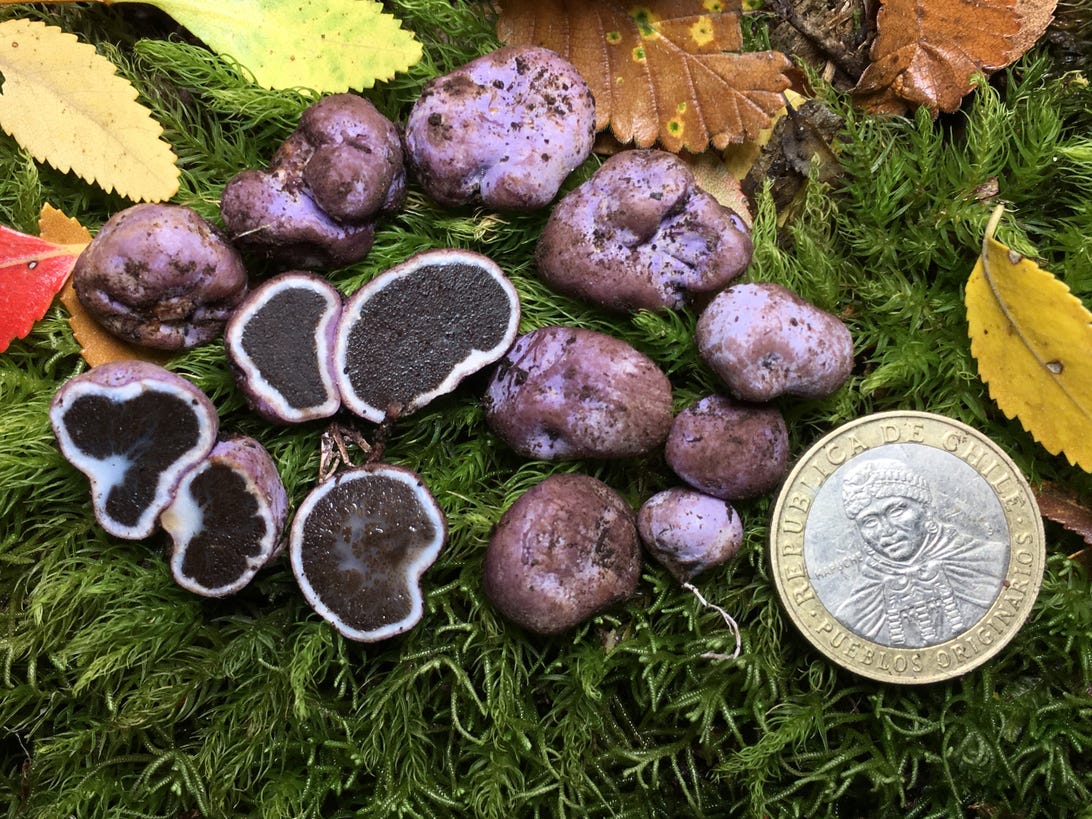
Patagonian birds flock to truffles like these for a delicious gourmet meal.
Matthew E. SmithWhen I'm handed a restaurant menu, the first thing I do is scan for anything that mentions truffles. Truffle risotto, truffle fries, truffle aioli, you name it. Turns out I'm not alone. A few Patagonian birds appear to do the same when surveying the forest for dinner.
Of course, there's already evidence of mammals besides humans enjoying the often nutty, umami fungi. Animals can help keep our pasta-adorning treat alive by dispersing truffle seeds when they drop feces in the wild. And now researchers from the University of Florida have published a study that shows feathery creatures can't stay away from the luxury either.
But the study, published Thursday in the journal Current Biology, says these gastronome chucao tapaculos and black-throated huet-huets feast on truffles that aren't as pungent as the type we know and love. In fact, there are quite a few species of truffles that are completely different from the sort you'll find on Eleven Madison Park's pantry shelves. The ones these birds seek out likely wouldn't appeal to us and resemble brightly colored berries.
According to senior author Matthew E. Smith, an associate professor at the University of Florida's plant pathology department, the discovery of truffles as these avians' favorite food emerged during one of his earlier research projects in Patagonia.
"We are working in the forest, raking the soil and digging up the truffles, and we notice these birds keep following us around and checking out the areas where we had disturbed the soil," he said in a statement.
"Then we find truffles with chunks pecked out of them," he continued. Marcos Caiafa, first author of the study, "even saw a bird eat a truffle right in front of him. All of this led us to ask, are these birds hunting for truffles?" Caiafa, a researcher in the same University of Florida department, had a special front-row seat to a little bird chomping on gourmet cuisine.
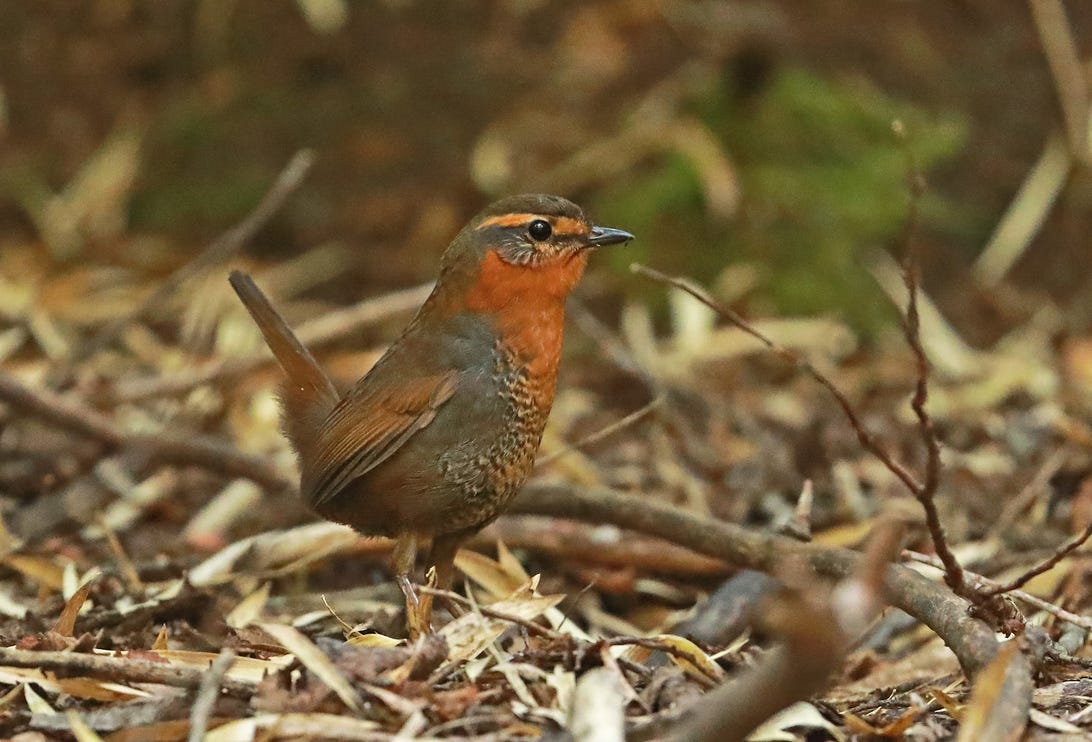
Fancy bird No. 1, a chucao tapaculo.
Neil Bowman/Getty ImagesAfter their surprising experience watching the flying creatures searching for and consuming the mushroom-like snack, Caiafa and Smith dug deeper into the mystery. They examined the birds' feces to see if truffle DNA was present.
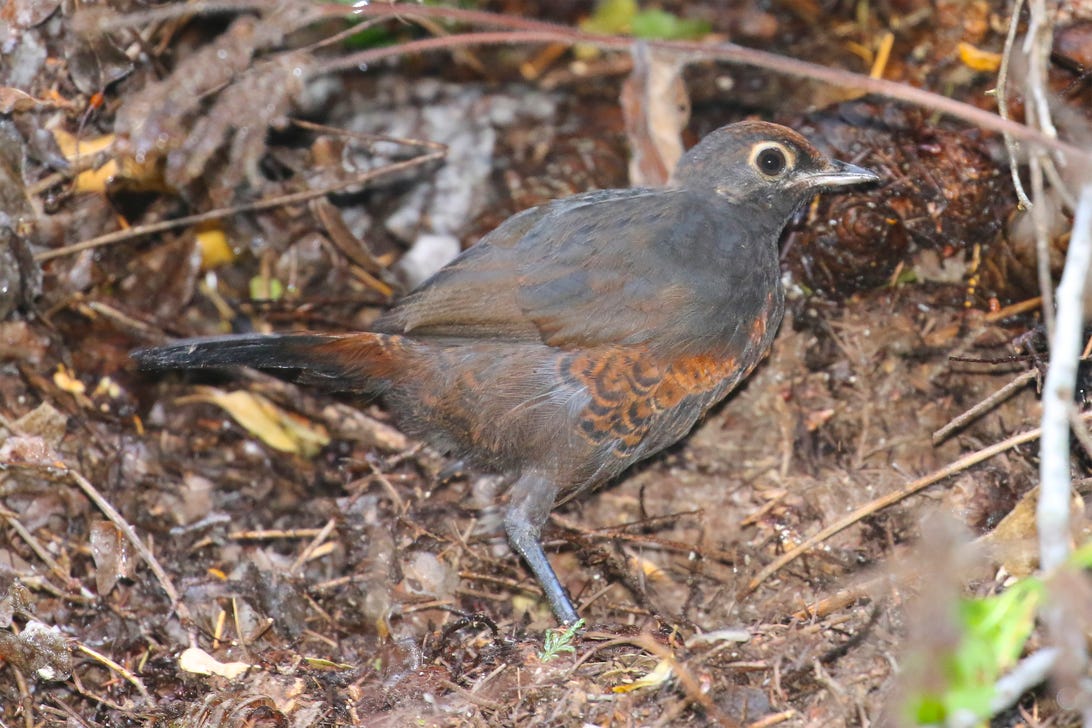
Fancy bird No. 2, a black throated huet-huet.
Cagan Hakki Sekercioglu/Getty Images"DNA-based diet analysis is exciting because it provides new insights into interactions between organisms that would otherwise be difficult to directly observe," said Michelle Jusino, one of the study's co-authors and a former researcher in Smith's lab.
"Because sampling feces does not negatively impact the target species, I think these methods are invaluable for studying and protecting both common and rare species in the future," Jusino said.
Upon analysis, 42% of chucao tapaculo poop and 38% of huet-huet poop was shown to have concrete DNA evidence of truffles -- the birds had clearly been munching on the colorful, mildly earthy tidbits. Then the team used a fluorescent microscope to check whether the spores found in the feces were still viable. They were. That means the birds help mammals drive truffle propagation by spreading spores when they defecate.
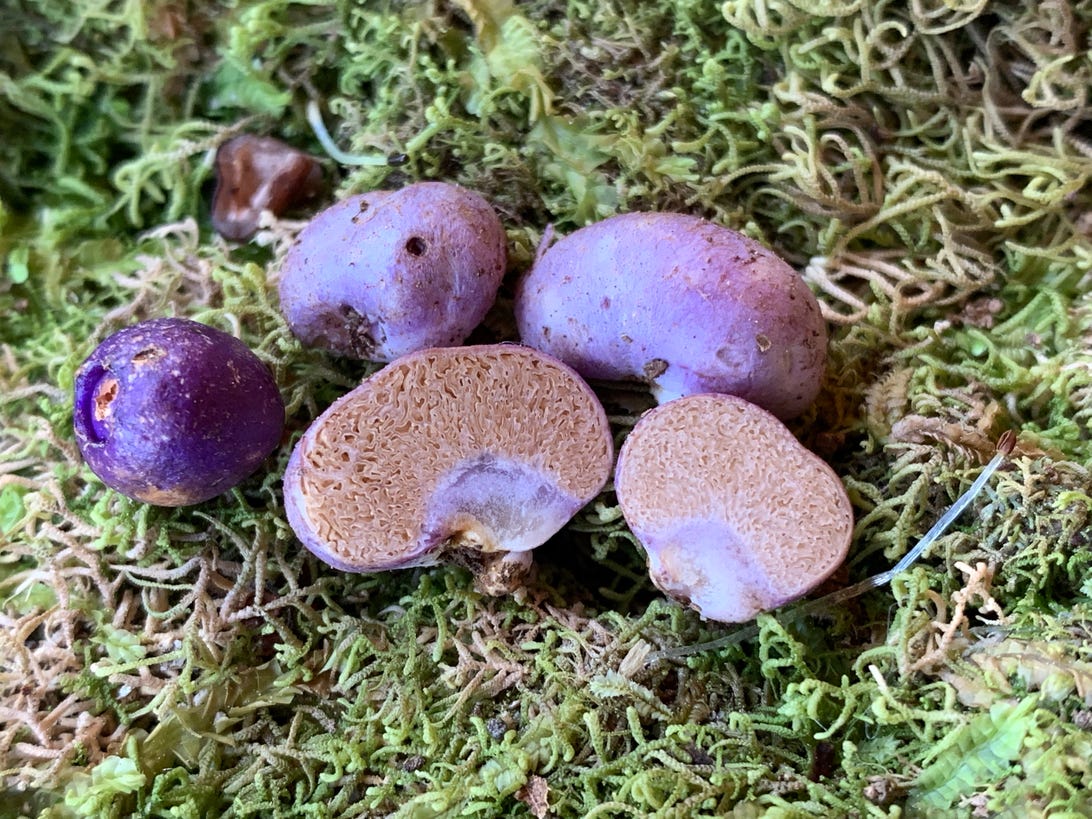
Truffles in the Patagonian forest.
Matthew E. SmithThe researchers also say these fungi have an important role in forest ecosystems: They aid in colonizing tree roots.
"These fungi form mycorrhizas, a relationship whereby the fungus helps the plant take up nutrients in exchange for sugars from the plant," explained Caiafa. Going forward, the team aims to decode why the studied truffles appear aesthetically similar to bright berries. They suspect it's due to an evolutionary adaptation that better attracts the high-end foodie birds.
Pricey gourmet ingredient is a daily snack for these forest birds - CNET
Read More
Tropical Smoothie Cafe offering collagen as smoothie ingredient - Fast Casual

Tropical Smoothie Cafe has added Vital Proteins collagen to its list of supplements that guests may add to smoothies. The unflavored supplement powder contains no gluten, dairy or added sugars, according to a company press release, which said that Collagen helps give structure to hair, skin, nails, bones, ligaments and tendons. Many people use the supplement to improve movement and flexibility and promote healthier-looking hair, skin and nails.
"We have heard again and again from our guests that they would love to be able to add this kind of boost to their smoothies as part of their daily health and wellness routines," Charles Watson, CEO of Tropical Smoothie Cafe, said in the release. "With Vital Proteins, we can offer our guests a high-quality supplement that many people — including some A-list celebrities — swear by as a way to look and feel better."
Vital Proteins collagen is the newest addition to the Tropical Smoothie Cafe supplement list, which includes Energizer, Fat Burner, Multi-Vitamin, Pea Protein, Probiotic, Vitamin B-12, Vitamin C and Whey Protein.
One scoop of Vital Proteins collagen provides 10 grams of collagen.
Tropical Smoothie Cafe has 1,000 locations.
Tropical Smoothie Cafe offering collagen as smoothie ingredient - Fast Casual
Read More
Why Turmeric Is the Natural Ingredient Your Skin-Care Routine Needs - Allure
In other words, as Dr. Collier puts it, "turmeric contains properties that encourage the skin to bring out its natural glow."
Are there any risks associated with using turmeric topically?
Although turmeric is considered very tolerable, both Dr. Fromowitz and Dr. Collier recommend patch-testing by applying a small amount of your chosen turmeric-infused product to your forearm and waiting a day or two to see if you develop an allergic reaction; it would likely manifest as irritation, redness, and swelling. That said, if you already know you're allergic to it when it's in food, don't even bother trying to apply it topically.
The biggest complaint typically heard about turmeric is that its vibrant hue can stain skin. "Expect that it might discolor or stain your skin yellow," Dr. Fromowitz says. But fear not: "This typically washes off easily."
Robinson says a good cleanse with your usual face wash should do the trick, but Dr. Collier likes a couple of other methods for thoroughly removing any lingering tinge. "To remove the yellow stains, use slightly warm olive or coconut oil, as turmeric is oil-soluble," she explains. Dab a cotton ball in the oil of your choice and rub it gently over the affected areas for 30 seconds, followed by a rinse with water. "Another way to remove the yellow stains is to rub a milk-soaked cloth or cotton pad over the skin in a circular motion to lighten the stains. Afterward, rinse your face with a mild cleanser and water."
What kind of products contain turmeric?
Although turmeric has been around for a long time, Robinson has noticed that it's gained even more popularity in recent years — which may account for why you can find it in so many types of products. Furthermore, he says, "It plays well with other ingredients."
Both Robinson and Dr. Collier note two specific types of products in which the herb is frequently found. "Turmeric is most often used in masks and serums to reduce acne, inflammation, and hyperpigmentation," Dr. Collier says. Robinson is a fan of Kiehl's Turmeric & Cranberry Seed Energizing Radiance Masque because of how quickly it makes skin look more radiant. As for serums, Dr. Fromowitz likes the Verso Antioxidant Turmeric Booster, which helps protect easily irritated skin from the onslaught of free radicals and other environmental agitators.
Of course, there are plenty of other types of products in which turmeric shows up. Dr. Collier appreciates the formula of the Kora Organics Turmeric Glow Moisturizer, a refillable face cream that teams up the extract with licorice to help combat discoloration. Dr. Fromowitz also recommends the Best of Beauty Award-winning Farmacy Green Clean Makeup Meltaway Cleansing Balm.
And don't be surprised if turmeric starts showing up in your SPF products. "Due to recent innovations in topical delivery and enhanced bioavailability, curcumin also shows promise as a new sunscreen filter," Dr. Collier tells Allure. "So we may start seeing turmeric's active ingredient in sunscreens and moisturizers used concomitantly with sunscreens." (Just be sure to keep using FDA-approved sunscreens — don't rely on turmeric alone.)
How can turmeric be used in DIY skin care?
Turmeric is one of the most popular ingredients in DIY skin-care recipes. (Hey, if it's already in the pantry, why not?) As a cosmetic chemist, Robinson prefers to stick to products from reputable manufacturers; however, if you're feeling creative, Dr. Collier says there several ingredients that may already be in your home that are agreeable with turmeric for a safe DIY skin-care treatment.
"Turmeric combines well with honey, as honey is a natural humectant. It also combines well with milk or yogurt because of the lactic acid, a natural exfoliant," Dr. Collier says. She personally loves an easy-to-make mask that involves a tablespoon of honey, a teaspoon of turmeric, and a few drops of rosewater. "Mix this blend into a paste. Keep the mask on for five to 10 minutes, and then rinse well with warm water."
More ingredient info:
Now check out Amanda Steele's 10-minute routine:
Follow Allure on Instagram and Twitter, or subscribe to our newsletter for daily beauty stories delivered right to your inbox.
Why Turmeric Is the Natural Ingredient Your Skin-Care Routine Needs - Allure
Read More
3-ingredient pepper jelly bites by Mama Steph - KTRE
/cloudfront-us-east-1.images.arcpublishing.com/gray/OPVDKWXZDNG6BD4MCKDQMMP67M.jpg)
TYLER, Texas (KLTV) - This is the perfect bite to put out for parties, or as snacks before holiday meals when people are getting hangry. They’re easy and really tasty!
3-ingredient pepper jelly bites by Mama Steph
Ingredients
Crescent roll dough
cream cheese
Jalapeno jelly
Copyright 2021 KLTV. All rights reserved.
3-ingredient pepper jelly bites by Mama Steph - KTRE
Read More
Tropical Smoothie Cafe offering collagen as smoothie ingredient - Fast Casual

Tropical Smoothie Cafe has added Vital Proteins collagen to its list of supplements that guests may add to smoothies. The unflavored supplement powder contains no gluten, dairy or added sugars, according to a company press release, which said that Collagen helps give structure to hair, skin, nails, bones, ligaments and tendons. Many people use the supplement to improve movement and flexibility and promote healthier-looking hair, skin and nails.
"We have heard again and again from our guests that they would love to be able to add this kind of boost to their smoothies as part of their daily health and wellness routines," Charles Watson, CEO of Tropical Smoothie Cafe, said in the release. "With Vital Proteins, we can offer our guests a high-quality supplement that many people — including some A-list celebrities — swear by as a way to look and feel better."
Vital Proteins collagen is the newest addition to the Tropical Smoothie Cafe supplement list, which includes Energizer, Fat Burner, Multi-Vitamin, Pea Protein, Probiotic, Vitamin B-12, Vitamin C and Whey Protein.
One scoop of Vital Proteins collagen provides 10 grams of collagen.
Tropical Smoothie Cafe has 1,000 locations.
Tropical Smoothie Cafe offering collagen as smoothie ingredient - Fast Casual
Read More
The everyday ingredient that harms the climate - BBC News
In September 2015, just a few months before the world signed up to the Paris Agreement on climate change, a number of huge forest fires erupted across Indonesian Sumatra and Borneo, darkening the skies across Southeast Asia and threatening the health of hundreds of thousands of people.
More than 2.6 million hectares (10,000 sq miles) had burned by the time the fires subsided in October. The fires were responsible for the same amount of greenhouse gas emissions as produced by the whole of Germany that year. The loss of tropical forests – the home of endangered species such as orangutans – was a hard blow for biodiversity. But it was the peat below the forests' surface that had the greatest impact on the climate.
Peat is a dense, soil-like material made up of partially decomposed organic matter which accumulates in swamp-like peatlands. Particularly in tropical regions, it can grow into a massive carbon store many metres deep. Worldwide, peatlands store more than 550 gigatonnes (billions of tonnes) of carbon globally. That's equal to 42% of the carbon stored in soil on the planet, despite peatlands covering less than 5% of the Earth’s surface area. Indonesia is home to some of the largest and most carbon-dense peatlands in the world.
Much of Indonesia's vast tropical forest – the third largest in the world – grows on peatlands. These soils are naturally wet, which keeps the peat from decomposing, but when forests are converted into palm oil plantations the peat dries out, leading them to rapidly degrade and release their carbon into the atmosphere. Globally, almost all oil palm is grown on lands that were once tropical moist forests.
The scale of Indonesian forest fires is a reminder to the world that addressing climate change means more than just shifting away from fossil fuels or adopting clean energy. Land also matters. Emissions from land-use, including agriculture, deforestation and peatland degradation, account for about a quarter of all global emissions, according to the Intergovernmental Panel on Climate Change.

(Source: Our World in Data/UN FAO, Credit: Adam Proctor/BBC)
Indonesia is ground zero for land-use change emissions. They typically make up around half of the country's total emissions, depending on the scale of fires in a certain year. The fires in 2015 made Indonesia the fourth largest greenhouse gas emitter globally, after China, the US and India.
Unlike temperate forests, fires are very rare in the tropics under natural conditions, because ample rainfall keeps the water table high. The problem is that oil palm, a non-native plant originally from West Africa, prefers dry land. As plantations expanded across Riau, North Sumatra and Central Kalimantan from the 1990s, canals were built to drain the land, putting peatlands at risk.
"Palm oil, much more than other crops, tends to expand onto tropical forests and peatlands with high carbon stock," says Stephanie Searle, fuels program director at the International Council on Clean Transportation. "Those impacts are really, really huge for the global climate."
Since 1990, palm oil has grown from a niche commodity to become one of Indonesia's main exports. The industry now encompasses 6.8 million hectares (26,300 square miles) of land, an area approaching the size of the Republic of Ireland. It produces 43 million metric tonnes of oil, 58% of the world's total, which is both consumed domestically and exported to regions including Europe, the United States, India and China.
"Palm oil has been a major driver of deforestation," says Annisa Rahmawati, a Jakarta-based forests campaigner at Mighty Earth, an environmental non-profit. "Insufficient law enforcement and disclosure created a situation that diminished our environment and harmed our people."
In 2021, six years after the historic fires, it seemed like progress was finally being made. While fires still burn yearly, including significant fires in 2018 and 2019, they were far less widespread than those in 2015. Furthermore, deforestation in 2020 had fallen 70% from its 2016 peak, according to Global Forest Watch data. The government's Peatland Restoration Agency and non-profits like Wetlands International and the Borneo Nature Foundation have re-wetted and restored hundreds of thousands of hectares of peatlands. In 2018, Indonesia implemented a ban on new oil palm plantations.
Meanwhile, entities like the Roundtable on Sustainable Palm Oil (RSPO), set up in 2004 after a wave of negative attention on the links of palm oil with deforestation, claim to have pushed supply chains to become more responsible. Major palm oil buyers such as L'Oreal, PepsiCo and Unilever have made zero-deforestation commitments.
But these fixes are not yet permanent. There has not yet been enough progress in transparency and responsibility in the palm oil industry to cut its links with deforestation, Rahmawati says. The RSPO has been criticised for enabling industry greenwashing, with a 2015 report from the Environmental Investigation Agency alleging fraud and a lack of credibility in its assurance processes in the organisation's supply chain certification scheme, and a 2019 follow-up finding many of these issues still remained. The RSPO responded that it is "committed to continuous improvement", and that the reports were inaccurate and did not take into account improvements to its assurance processes.
Indonesia's ban on new palm oil concessions expired in September 2021, and has not been replaced. The passage of a major new law in Oct 2020, meant to create jobs and spur economic recovery from Covid-19, paired with near-record high prices for palm oil globally, have led many to fear that a return to fires, peatland and widespread deforestation could again be on the horizon.
The fires in 2015 were, in many ways, a worst-case scenario. That year saw an extremely strong El Niño effect, which brought dry conditions to much of Indonesia. Once the fires reached the peat underground, they became extremely difficult to put out, and burned for weeks until rains finally came.
The massive scale of these fires acted as a wake-up call to Indonesia. Ahead of United Nations global climate conference in 2015 (COP21), Indonesia announced in its UN climate pledge to reduce emissions from forestry by 66% to 90% by 2030, depending on international assistance. To support this, in January 2016 President Joko "Jokowi" Widodo created the Peatland Restoration Agency (BRG) and tasked it with meeting new goals to restore 1.7 million hectares (6,600 sq miles) of peatlands within concession areas (including palm oil plantations), and 900,000 hectares (3,500 sq miles) of peatlands outside of these areas by 2020. The country's 2018 palm oil concession ban took this a step further, and in 2019 its moratorium on deforestation became permanent.
The BRG and other entities tasked with supporting peatland restoration faced a huge challenge. Peatlands are incredibly fragile, so they needed to work fast to restore those that were already being lost in order to limit CO2 emissions.
"If we are too late in restoring our peatlands, it will not be possible," says Nyoman Suryadiputra, a senior advisor at Wetlands International Indonesia. "Once the organic matter disappears, the ecosystem will change and it's no longer possible to rehabilitate it."
If anyone knows about this, it's Wetlands International Indonesia. The organisation has been working on peatland restoration across the archipelago since the late 1990s in the same provinces where the rapid expansion of oil palm plantations has transformed landscapes. Its latest project, begun in 2019, is working with 350 households in the province of North Sumatra to restore degraded smallholder palm oil plots around their villages.
In order to ensure that restoration is both effective and sustainable in the long-term, they take a community-centered approach. "We have to look after the community's livelihood," says Nyoman. "We cannot force them to restore their peatlands if they are hungry." That means providing alternative income streams to palm oil, such as other kinds of forest products or aquaculture. It also means ensuring locals are well-informed about the restoration effort and directly involved in monitoring it.
Many communities in Indonesia use peatlands for farming not only palm oil but other crops such as rice, maize and root vegetables, which they depend on for income, says Herry Purnomo, a researcher in peatland restoration at the Center for International Forestry Research in Bogor, Indonesia. "The development of community-based business models hand-in-hand with peatland restoration is a must," he says.
The BRG nearly met one of its goals, restoring 835,288 hectares (3,200 sq miles) of peatlands on state or community-controlled lands. But it failed, by far, to meet its other goal for peatland restoration within concession areas, restoring only 390,000 (1,500 sq miles) out of a planned 1.7 million hectares (6,600 sq miles) as of early 2020. The reason for this was BRG lacked the legal authority to force concession holders to restore peatlands, says Purnomo. "Peatland restoration outside concession areas is mainly the responsibility of the government, while inside the concession it is the concession holder's responsibility," he says.
Earlier this year, the organisation saw its mandate both extended and expanded. Now called the Peatland and Mangrove Restoration Agency (BRGM), it is tasked with restoring 600,000 (2,300 sq miles) hectares of degraded mangroves as well as a further 1.2 million hectares (4,500 sq miles) of peatlands by the end of 2024.
"I hope they can meet the updated goals," said Fadhli Zakiy, who leads the Peatland Restoration Information Monitoring System at WRI Indonesia. "We believe that they can, as long as the government supports them with an adequate budget and with regulations."

Palm oil is best known for its use in household products, but much of it is used to fuel vehicles (Source: Transport and Environment, Credit: Adam Proctor/BBC)
It is proper regulations, however, that have in the past several months become a key concern. The 2020 legislation on job creation raised alarm due to its streamlining of environmental regulations and changes which make land acquisition by corporations easier. Alongside the expiration of the moratorium on new palm oil concessions, it led to concern that the industry would expand onto forest and peatland. The government did not respond to a request for comment.
Juliana Nnoko-Mewanu, a senior researcher at Human Rights Watch who has researched expansions of palm oil plantations in West Kalimantan, has expressed concerns that the job creation law could make things worse by "curtailing communities' and environmental experts' involvement in environmental impact assessments [and] accelerating licensing processes for [oil palm] businesses".
Combined, the new bill and the end of the palm oil moratorium "may end up increasing deforestation", says Arkian Suryadarma, senior forest campaigner at Greenpeace Indonesia. He says that Indonesia's peatland and deforestation policies are "not ambitious enough" to meet the 2030 goal.
Continuing peatland restoration will also require addressing the elephant in the room: peatlands which sit in existing palm oil plantations. Efforts to do land-swaps – from peat or high-carbon land to degraded land – haven't yet proven to have much impact, and canal-blocking and re-wetting on concession land has lagged behind activities on state-controlled land.
This impacts everyone, says Nyoman, because the peatlands are both interconnected and porous. "If a community is doing a rehabilitation project, but the private sector around it doesn't, then it will affect the peatland in the community land," he says.
While the government attributes the fall in deforestation between 2016 and 2020 to its own efforts, others believe it was due to unfavourable market forces. The last five to six years have seen a weak price for crude palm oil so there was not so much appetite for industry expansion, says Andika Putraditama, forests and commodities senior manager at WRI Indonesia. This year, though, the price of palm oil has hit a five-year record high due to shortages in the global vegetable oil market. "We need to be cautious to see if there is a spike in deforestation," says Putraditama.
The end result is a push-and-pull between all these forces. "A lot needs to happen for Indonesia to meet its 2030 [forestry and land-use] target," says Brurce Muhammad Mecca, an analyst at Climate Policy Initiative's Indonesia office. "Indonesia needs to provide a mix of policies that incentivise forest conservation and outweigh the economic incentives for deforestation."
Wherever the balance falls will have broad repercussions for the global climate. It will take a momentous effort – from civil society, the government and the global community – to protect Indonesia's critically important tropical forests and peatlands.
--
Data research and visualisation by Kajsa Rosenblad
Animation by Adam Proctor
--
Towards Net Zero
Since signing the Paris Agreement, how are countries performing on their climate pledges? Towards Net Zero analyses nine countries on their progress, major climate challenges and their lessons for the rest of the world in cutting emissions.
--
The emissions from travel it took to report this story were 0kg CO2. The digital emissions from this story are an estimated 1.2g to 3.6g CO2 per page view. Find out more about how we calculated this figure here.
--
Join one million Future fans by liking us on Facebook, or follow us on Twitter or Instagram.
If you liked this story, sign up for the weekly bbc.com features newsletter, called "The Essential List". A handpicked selection of stories from BBC Future, Culture, Worklife, Travel and Reel delivered to your inbox every Friday.
The everyday ingredient that harms the climate - BBC News
Read More
Thursday, October 28, 2021
Keep it simple with these 3-ingredient recipes - The Takeout
[unable to retrieve full-text content]
Keep it simple with these 3-ingredient recipes The TakeoutKeep it simple with these 3-ingredient recipes - The Takeout
Read More
Hoda swears by this 2-ingredient fish dish for a romantic dinner - Yahoo News
Hoda Kotb has a go-to dish whenever she wants to whip up a romantic dinner for her fiancé, Joel Schiffman.
"Well, there’s only one meal that I make for Joel, and it’s a winner. If you make it for your man, he’s going to be so happy. It only needs two ingredients," she said on TODAY with Hoda & Jenna on Thursday.
The two ingredients required are a piece of black cod and a bottle of ponzu, a citrus-based Japanese sauce. So simple, right? Wait until you hear the process.

"Place the fish in a cast-iron pan and then pour the ponzu sauce so it’s halfway up the fish," Hoda said.
Then, stick the pan in the oven at 350 F for 15 to 20 minutes, and voilà — a delicious fish meal.
"It’s like eating butter," Hoda said. "He’ll be like … 'Who are you?'"
She added that she sometimes makes the fish with a side of couscous. Hoda was reminded of her own, go-to romantic meal after hearing about Ina Garten’s famous engagement roast chicken recipe.
Related: Without this recipe, would the Duke and Duchess of Sussex have tied the knot?
Actor Emily Blunt revealed recently that she made Garten’s magical roast chicken recipe for her now-husband, John Krasinksi, early in their relationship, and she believes it inspired him to propose.
Hoda suggested Jenna make the romantic recipe for her husband, Henry. We can't wait to hear about the results.
But this isn't the first time Hoda's been raving about her famous fish dish. She shared the recipe with Kathie Lee Gifford back in 2017, at that time using sea bass instead of cod.

"I never cook and this is a recipe for anybody who doesn’t know how to cook," Hoda said.
Although Kathie Lee teased Hoda about the recipe’s simplicity, she later ate her words after trying the finished product.
"Wow, oh my gosh," KLG said after taking a bite. "Wow, Hoda, you get your own cooking show."
Hoda swears by this 2-ingredient fish dish for a romantic dinner - Yahoo News
Read More
In Jamie Oliver's newest cookbook, you don't need many ingredients to make a delicious meal - WBUR News
You don’t need a ton of obscure ingredients to cook up a delicious meal. That’s the crux of chef and restauranteur Jamie Oliver ’s new cook...

-
SciCheck Digest The COVID-19 vaccine from Moderna uses an ingredient called SM-102 to deliver the mRNA that carries instructions for how t...
-
Every day, and thousands of times a year in the US, a kid swallows a battery. In the last 20 years or so, this dangerous and sometimes fat...



